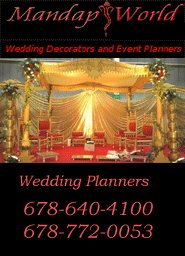|
|
|
|
|
|
Quebec City is the capital of the Canadian province of Quebec and is located within the Capitale-Nationale region. It is the second largest city in the province, after Montreal. Quebec City is about 233 kilometres (145 mi) away from Montreal. The ramparts surrounding Old Quebec (Vieux-Québec) are the only remaining fortified city walls in the Americas north of Mexico, and were declared a World Heritage Site by UNESCO in 1985 as the "Historic District of Old Quebec". It is also one of the oldest cities in North America (founded in 1608). As of the 2006 Canadian Census, the city has a population of 491,142, and the metropolitan area has a population of 715,515.
The narrow width of the river as it enters the towns of Quebec and Lévis, on the opposite bank, provided the name given to the city, Kébec being the Algonquin word meaning "where the river narrows". Quebec City is internationally known for its Summer Festival, Winter Carnival and the Château Frontenac, a historic hotel which dominates the city skyline. The National Assembly of Quebec (provincial parliament), the Musée national des beaux-arts du Québec (National Museum of Fine Arts) and the Musée de la civilisation (Museum of Civilization) are found within or near Vieux-Québec.
Among the tourist attractions near the city are Montmorency Falls and the Basilica of Sainte-Anne-de-Beaupré in the town of Sainte-Anne-de-Beaupré.
Quebec City is one of the oldest European settlements in North America. While many of the major cities in Mexico date from the sixteenth century, among cities in the U.S. and Canada only St. John's, Newfoundland and Labrador, Port Royal, Nova Scotia, St. Augustine, Florida, Santa Fe, New Mexico, Jamestown, Virginia and Tadoussac, Quebec were created earlier than Quebec City. However, Quebec City is the first to have been founded with the goal of receiving permanent settlement, and not as a commercial outpost, and therefore is considered to be the first European-built city in non-Spanish North America. Québec was founded by Samuel de Champlain on 3 July 1608 at the site of a long abandoned St. Lawrence Iroquoian settlement called Stadacona. It was to this settlement that the name "Canada" refers. Although called the cradle of the Francophone population in North America, the Acadian settlement at Port-Royal antedates it. The place seemed favourable to the establishment of a permanent colony.
During World War II, two conferences were held in Quebec City. The first one was held in 1943 with Franklin Delano Roosevelt (the United States' president),Winston Churchill (the United Kingdom's prime minister), William Lyon Mackenzie King (Canada's prime minister) and T.V. Soong (China's minister of foreign affairs). The second one was held in 1944, and was attended by Churchill and Roosevelt. They took place in the buildings of the Citadelle and of nearby Château Frontenac. A large part of the D-Day Landings plans were made during those meetings.
Much of the city's best architecture is located east of the fortification walls in Vieux-Québec (Old Quebec) and Place Royale. This area has a distinct European feel with its stone buildings and winding streets lined with shops and restaurants. Porte St-Louis and Porte St-Jean are the main gates through the walls from the modern section of downtown. West of the walls are the Parliament Hill district and the Plains of Abraham.
The Upper Town is linked by the Escalier «casse-cou» (literally "neck-breaking" steps) and the Old Quebec Funicular to the Lower Town, which includes such sites as the ancient Notre Dame des Victoires church, the historic Petit Champlain district, the port, and the Musée de la Civilisation (Museum of Civilization). The Lower Town is filled with original architecture and street designs, dating back to the city's beginnings. Murals and statues are also featured. The Lower Town is also noted for its wide variety of boutiques, many featuring hand-crafted goods.
Quebec City is known for its Winter Carnival and for its Saint-Jean-Baptiste Day celebrations.
Tourist attractions located near Quebec City include Montmorency Falls and the Basilica of Sainte-Anne-de-Beaupré.
Jardin zoologique du Québec, reopened in 2002 after two years of restorations but closed in 2006 after a political decision. It featured 750 specimens of 300 different species of animals. The zoo specialized in winged fauna and garden themes, but also presented several species of mammals. While it emphasizes the indigenous fauna of Quebec, one of its principal attractions was the Indo-Australian greenhouse, featuring fauna and flora from these areas.
Parc Aquarium du Québec, reopened in 2002 on a site overlooking the St. Lawrence River, presents more than 10,000 specimens of mammals, reptiles, fish and other aquatic fauna of North America and the Arctic. Polar bears and various species of seals of the Arctic sector and the "Large Ocean", a large basin offering visitors a view from underneath, form part of the principal attractions
Quebec City is served by Jean Lesage International Airport, located in the West of the city.
The city also has a large major port on the St-Lawrence in the first, fifth and sixth boroughs.
|
|
|




|
|
|
|
|